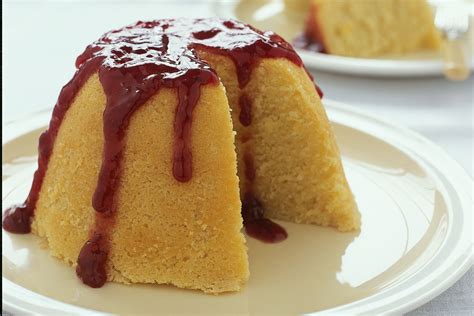The Ultimate Guide to Making Delicious Steam Pudding
Steam pudding, a classic British dessert, offers a wonderfully moist and comforting treat. While it might sound intimidating, this guide will break down the process, ensuring you create a perfect steam pudding every time. We'll cover everything from choosing the right ingredients to troubleshooting common issues, making this your go-to resource for all things steam pudding.
Understanding the Magic of Steam Pudding
Steam pudding's unique texture comes from being steamed rather than baked. This gentle cooking method prevents drying, resulting in a rich, moist interior. The batter, typically based on suet, flour, and fruits (or other mix-ins), swells beautifully during the steaming process.
Ingredients for a Classic Steam Pudding
This recipe provides a foundation for various variations. Feel free to experiment with different fruits, spices, and flavorings!
- 175g Self-raising Flour: Provides the structure for your pudding. You can substitute plain flour with 1.5 tsp baking powder added.
- 50g Suet: Traditional suet provides richness and moisture; you can substitute with vegetable suet for a vegetarian option.
- 175g Mixed Dried Fruit: Sultanas, raisins, currants – the classic combination! You can also experiment with cranberries, chopped apricots, or even chocolate chips.
- 100g Light Brown Soft Sugar: Adds sweetness and moisture.
- 150ml Milk: Aids in creating a smooth batter.
- 1tsp Mixed Spice: Classic warming spices enhance the fruit flavors. Adjust to taste.
- 1 Egg: Binds the ingredients together. Lightly beaten is best.
- Butter for greasing: Essential to prevent sticking.
- Boiling Water for steaming: Ensures even cooking.
Step-by-Step Steam Pudding Recipe
- Prepare the Fruit: If using larger dried fruits, chop them into smaller pieces for even distribution.
- Grease the Pudding Basin: Generously grease a 1-pint pudding basin with butter. This is crucial to prevent sticking.
- Combine Dry Ingredients: In a large bowl, combine the flour, suet, sugar, and mixed spice.
- Add Wet Ingredients: Add the milk and beaten egg to the dry ingredients. Mix until just combined – don't overmix! A few lumps are okay.
- Stir in Fruit: Gently fold in the mixed dried fruit.
- Fill the Basin: Pour the batter into the prepared pudding basin.
- Cover the Basin: Cover the basin tightly with a double layer of greaseproof paper or foil, ensuring a good seal to prevent steam from escaping.
- Steam the Pudding: Place the basin in a large saucepan, ensuring the water level reaches about halfway up the sides of the basin. Bring the water to a rolling boil, then reduce heat and simmer for 2.5-3 hours.
- Check for Doneness: After 2.5 hours, gently insert a skewer or knife into the center. If it comes out clean, the pudding is done. If not, continue steaming in 30-minute increments until cooked through.
- Serve: Carefully remove the basin from the saucepan (use oven gloves!). Let it rest for a few minutes before inverting the pudding onto a serving plate. Serve warm with custard or vanilla ice cream.
Tips for Perfect Steam Pudding
- Don't overmix the batter: Overmixing develops gluten, resulting in a tough pudding.
- Use good quality ingredients: The flavor of your pudding will depend heavily on the quality of your ingredients.
- Check the water level regularly: Ensure the water level remains consistent throughout the steaming process. Top up with boiling water as needed.
- Let the pudding rest: Allow the pudding to rest for a few minutes after steaming before inverting it. This prevents it from crumbling.
Variations on the Classic Steam Pudding
- Apple & Cinnamon Steam Pudding: Replace the mixed fruit with chopped apples and add 1-2 tsp of cinnamon.
- Chocolate Steam Pudding: Add 50g of dark chocolate chips to the batter.
- Gingerbread Steam Pudding: Add 1 tsp of ground ginger and ½ tsp of ground cloves.
Troubleshooting Common Steam Pudding Problems
- Pudding is too dry: This could be due to insufficient liquid or over-steaming. Ensure you've added enough milk and don't overcook it.
- Pudding is stuck in the basin: This is usually due to inadequate greasing. Ensure you generously grease the basin.
- Pudding has sunk in the middle: This can happen if the batter is overmixed or if the pudding is undercooked.
This comprehensive guide should help you master the art of making steam pudding. Experiment, have fun, and enjoy the delicious results! Remember to share your steam pudding creations and tag us! (If posting online, add your relevant social media handles here).

